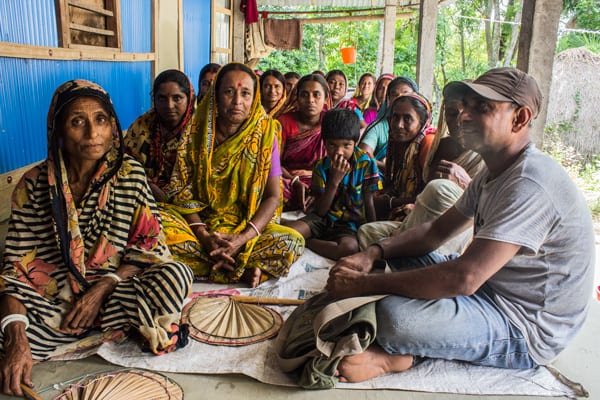The research on how women are affected by climate change is shockingly scarce. Considering that we would not exist without women, as a society, most of us tend to keep them in the back of our minds when it comes to everything from legislation to scientific research. In stark comparison, author Margaret Alston puts women at the core of her book, Women and Climate Change in Bangladesh. She highlights the fact that many climate research models that provide the scientific data, such as sea level rise and riverbank erosion rates, for climate policies are not created to analyze the ways in which women, in particular from Bangladeshi rural communities, are disproportionally affected by climate change. In dedication to these women, Alston specifically highlights their voices in her Acknowledgements by stating, “through this work I hope to not only ensure that her voice [Bangladeshi women] is heard but that the world listens.”

The book cover for Margaret Alston’s book, “Women and Climate Change in Bangladesh” published in 2014
What makes Alston’s book attention grabbing to the point you cannot put it down is her argument in favor of adopting an ecofeminist approach that transforms the way we approach policies for climate change adaptation and resiliency, not only in places like Bangladesh, but internationally as well. While there is no single definition of ecofeminism, Alston defines it as the linkage between the oppression of women with that of nature, arguing that the subsistence activities of women, in other words, agriculture and farming, have been overlooked because of their “non-monetary” value in a capitalist system. She especially connects patriarchy, capitalism, and colonialism as oppressive factors in society that contribute to the lack of interest in learning about the way women are impacted by climate change. By using this framework, Alston and other ecofeminists agree that the domination of women with that of nature are fundamentally connected and that environmental efforts are therefore integral with work to overcome the oppression of women.
Alston argues that while there is a lack of gender sensitivity (the ways in which we think about gender) in climate-related polices and actions, there has been a major transnational gender equality framework developed in recent decades. Among the climate-policies and initiatives she refers to are the eight Millennium Development Goals adopted by the United Nations General Assembly in 2000, The Convention on the Elimination of Discrimination against Women (CEDAW), and the 2008 Meeting of the Commission for the Status of Women. While these have been successful in promoting gender equality and the empowerment of women, there is still much work to do in an environment that is always changing. Given climate change, rising inequality and economic uncertainty, we need to create more connections between environmental protection, social equality, and inclusive economic growth, which all require women’s full participation. Furthermore, Alston argues that climate change is not gender neutral and that a human rights approach based on ecofeminist frameworks must be adopted in order to fully understand the impacts of climate events on women, their livelihoods, safety and health.
There is extensive international research from development organizations, like Oxfam, that recognizes that gender sensitivity in post-disaster situations caused by climate change in Bangladesh, like cyclones and flash floods, has positive social and economic benefits for both women and men! Some of our current disaster relief frameworks are failing women, and so the engagement of women in community skill-share conversation can help prevent huge losses in rural areas most affected by climate change. Alston also refers to the UN International Strategy for Disaster Reduction which has noted that “attention and resources directed to local, women’s traditional cultural knowledge and expertise produced more efficient, relevant and cost effective projects” for communities.
As a way of understanding current Bangladeshi country perspectives of women, Alston looked at the way the country’s history has played a role. The relationship between the ways women were treated during the nine-month long Bangladesh Liberation War, where many women were raped, brutally tortured and killed, provide the cultural background to how women are viewed today. Following the war, the government attempted to reduce the social ostracism women experienced in Bangladesh, but this project immediately backfired. Women became portrayed more as victims than as heroines, and were targets of public shaming and oppression. Alston argues that because of this history, women were compelled to remain silent about their experiences, and have only slowly began speak out regarding the oppression of women in Bangladesh. She stresses the importance of creating more international policies and frameworks for the elimination of all forms of discrimination against women, as a step forward to also creating more equality in climate change conversations.
Our international community has so much to learn about adaptation and resilience methods and policies from countries like Bangladesh. The country is by no means a high emitter of carbon and is one of the countries most critically affected; yet it manages to continue progressing. As Alston says, when we begin using ecofeminist frameworks and approaches and incorporate them more into laws protecting women against violence and programs promoting women’s empowerment there will be a spark ignited for researchers to prioritize studying the role gender plays in climate change for today’s and tomorrow’s climate change policies at both the international and local levels.
